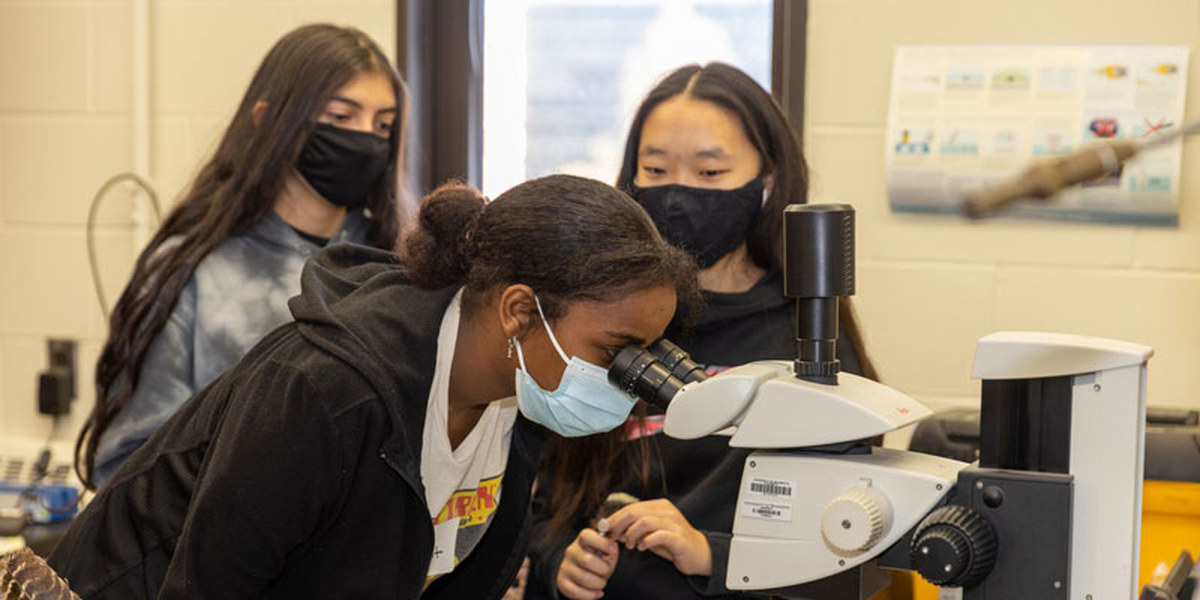
Earlier this month, more than two dozen middle school students from Heritage E-STEM magnet school, a public middle school in the school district immediately south of St. Paul, spent the day getting a sneak peak into the world of biology. They looked into the origins of life in the Seelig Lab, checked out C. elegans and plant leaves under a microscope in the Elias lab, got acquainted with the -80 freezer and PCR machines in Gortner Lab, explored the diversity of plant life at the CBS Conservatory & Botanical Collection and learned about some of the world’s largest falcons and owls at the Raptor Center, among other activities. They were there as part of the Grass-Roots Advancement in STEM Professions (GRASP) MN initiative, launched this fall by the BMBB DEI committee under the leadership of Kelly Aukema.
A lecture by Yasmiyn Irizarry, an assistant professor at the University of Texas at Austin who was invited to speak to the MICaB program last year, inspired Kelly Aukema to act. The talk -- Does STEM stand out? Examining racial/ethnic gaps in STEM-related perceptions, pathways, and persistence through school -- included Irizarry’s quantitative analysis of data from the Early Childhood Longitudinal Study about teacher evaluations of students of color. Among the findings was the persistent perception that certain minorities have low aptitude for STEM subjects derails students from the college-bound math tracks in middle and high school and causes students of color to avoid STEM majors later in college.
“This talk had an impact on me because, at that time, my youngest son was attending Heritage,” says Aukema, a research associate in the Department of Biochemistry, Molecular Biology and Biophysics. “Before the pandemic, I had seen in person the excitement that so many of his classmates had for science through presentations of their research projects with the UMN CBS INsciEd Out program, and it really upset me to think that these students might lose their passion for STEM and perhaps even be steered away from STEM by well-meaning teachers and counselors.”
Aukema connected with the BMBB DEI committee about potential outreach to middle school students. The committee was interested in the long-term work of creating a pipeline to college and graduate school for diverse students from schools around the Twin Cities. They invited Aukema to spearhead the work, which resulted in the GRASP MN initiative. “We wanted to invite students to campus to help them envision attending UMN for college in STEM majors,” she says.
The planning team included Dan Halvorsen, an emeritus professor of the UMN Medical School who volunteers at Heritage, Santiago Martinez Cifuentes, Sofia Moraes and Kenny Karanja, two BMBB graduate students and a BMBB alumnus who are members of the BMBB DEI committee. The group hopes to continue to bring students from other schools to campus with tentative plans to do so next spring.
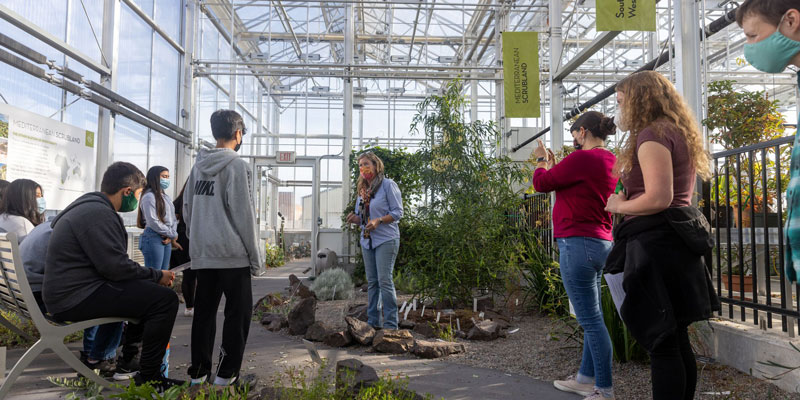
Students met with CBS Conservatory staff where they talked about the Conservatory's plant collection, including species from desert and tropical regions. Students learned about how plants from different parts of the world can teach us about convergent evolution.
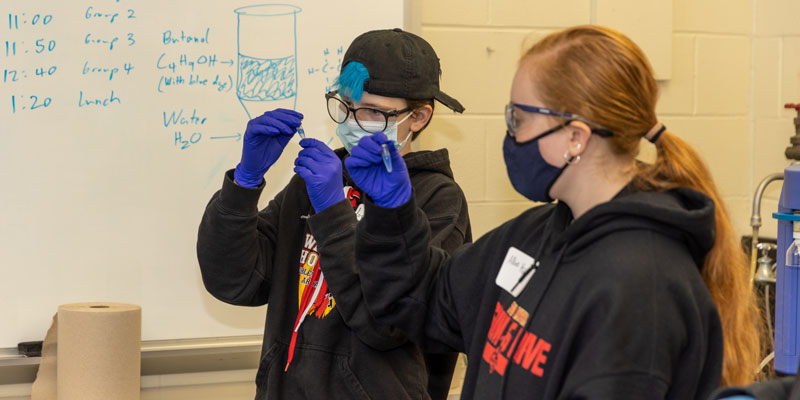
Students learned about about origins of life and the evolution of early proteins in the Seelig lab, as well as a few lab members' path to graduate school.
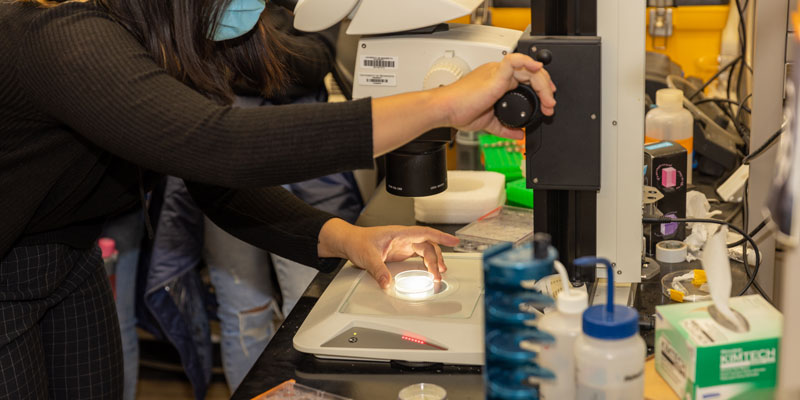
In the Elias lab, the students looked at C. elegans and plant leaves under the microscope. They talked about bacterial phosphate binding proteins and their importance regarding survival in a toxic arsenic rich environment, as well as quorum quenching enzymes to tackle harmful bacteria instead of using antibiotics.
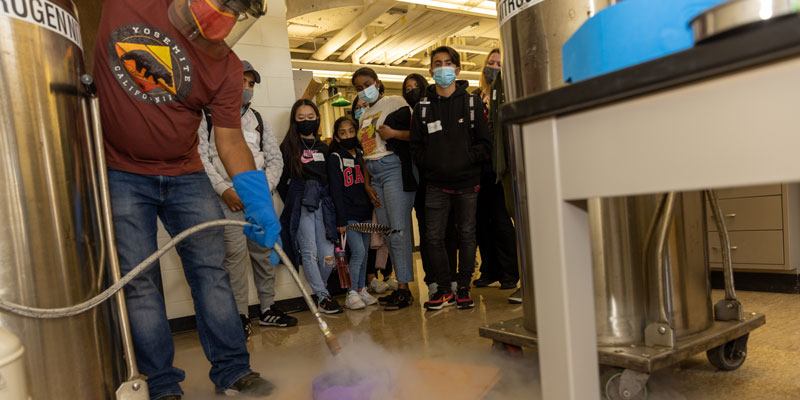
The students saw saw a -80 freezer, liquid nitrogen, geiger counters and PCR machines in labs in the Gortner Building. They used pipettes, a microscope, a microcentrifuge and the protein modeling program, PyMOL.